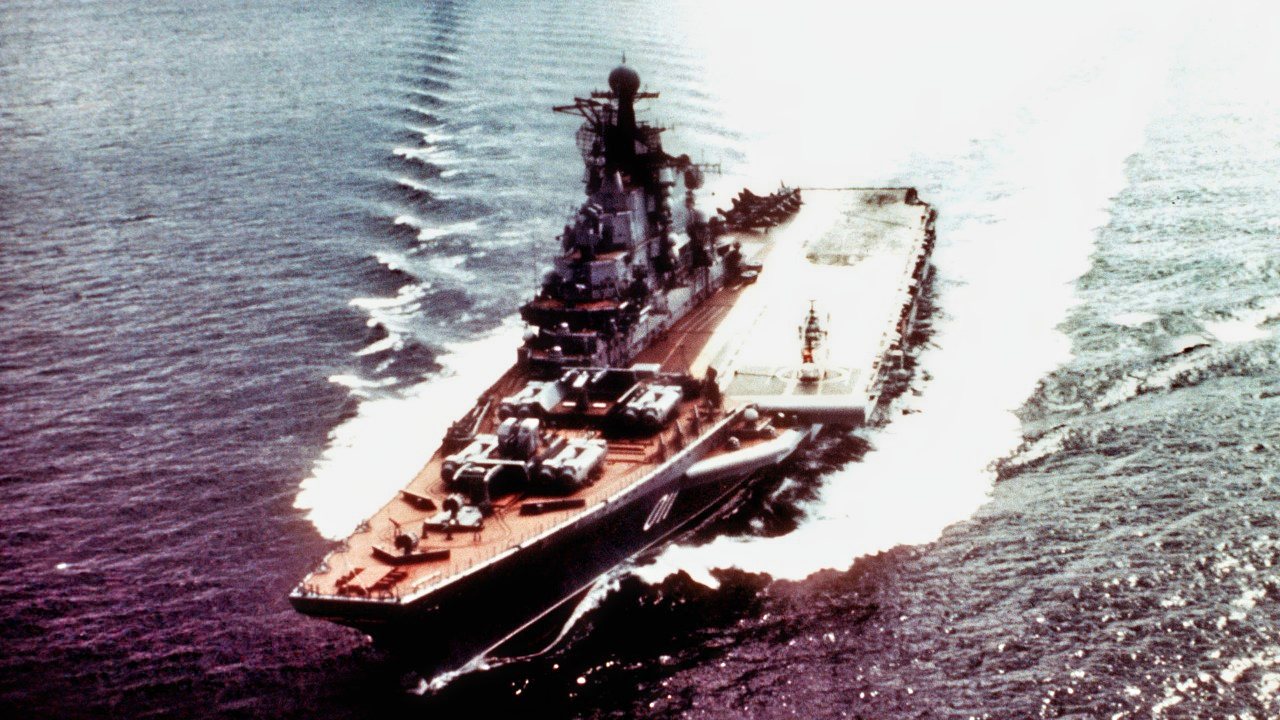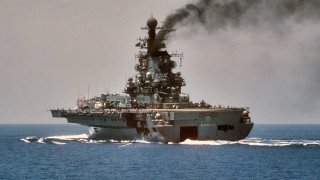China Used One of Russia's Prized Aircraft Carriers as a Museum Ship
The Soviet-era Minsk aircraft carrier, originally a Kiev-class "heavy aviation cruiser," has had a unique post-service life as a museum piece in a now-defunct Chinese theme park. Named after the Belarusian capital, the Minsk was constructed in 1978 during the Cold War to compete with U.S. Navy aircraft carriers.
Summary: The Soviet-era Minsk aircraft carrier, originally a Kiev-class "heavy aviation cruiser," has had a unique post-service life as a museum piece in a now-defunct Chinese theme park. Named after the Belarusian capital, the Minsk was constructed in 1978 during the Cold War to compete with U.S. Navy aircraft carriers.
-It was equipped with formidable weaponry, including anti-ship and surface-to-air missiles.
-Post-Soviet Union dissolution, high maintenance costs and geopolitical changes led to its decommissioning. Sold initially to South Korea for scrapping, it was later bought by a Chinese firm and transformed into the centerpiece of Minsk World in Shenzhen. The park closed in 2006, and the carrier remains moored in a man-made lagoon, its future uncertain.
Minsk Aircraft Carrier: A Soviet Relic's Second Life in a Chinese Theme Park
The Soviet-era Minsk aircraft carrier was not sold for scrap or procured by another navy after the USSR collapsed. This Kiev-class warship was left to rust away at a man-made lagoon in a China-based theme park that is now closed.
The Minsk had been the centerpiece of an odd museum-like attraction built around a range of Soviet-era weaponry. MiG-23 and MiG-27 swing-wing jets, Mi-24 Hind helicopters, and other old Soviet designs sat on display. The theme park went out of business in the early 2000s, leaving the Minsk and its counterparts to stagnate.
Introducing the Soviet-era Minsk Carrier
Named to honor the capital city of Belarus, the Minsk was laid down in 1972 as the Soviet Union’s second Kiev-class carrier. The Cold War sparked a race to produce more advanced carriers, and the Soviets at this time wanted a supercarrier that could outperform the U.S. Navy’s fleet of Kitty Hawk-class ships. The design of these vessels was based in part on a previous proposal, the Project Oreo full-deck carrier.
The Kiev ships carried the unique designation of “heavy aviation cruisers,” since they blended the characteristics of an aircraft carrier and a cruiser. This set the Kiev vessels apart from the carriers being produced by the U.S. and its NATO allies.
The Kiev, the lead ship in the class, was constructed in 1975, followed by sister ships Minsk in 1978, Novorossiysk in 1982, and Baku in 1987. All four vessels were constructed at the Ukraine-based Nikolayev South Shipyards, the USSR’s sole manufacturer of large surface warships. Each ship in this class was well armed, equipped with eight SS-N-12 “Sandbox” anti-ship missiles that could carry a 2,000 pound high explosive warhead or a 250 kiloton nuclear warhead. The Minsk, like the first two ships of the class, also featured two twin rail SA-N-3 surface-to-air missile launchers.
What Happened to the Minsk Aircraft Carrier
The Minsk operated with the Soviet Pacific Fleet following her introduction to service. In the 1980s, the carrier deployed to the Indian Ocean, and it also visited Vietnam. Despite her capabilities, Minsk and her sister ships were considered too expensive to maintain and operate after the fall of the Soviet Union. Additionally, the Kiev-class’ manufacturers were now officially based in the separate country of Ukraine.

In the mid-1990s, the Minsk and Novorossiysk were sold to South Korea for scrapping, but the Minsk’s sad journey would not end here. The Chinese shipbreaking company Guangdong Ship Dismantling purchased the Minsk and sold the carrier to Si Ke Investment Company, which acquired the ship in order to turn it into a theme park. Minsk World officially opened in 2000, but it went bankrupt six years later.
Since the closing of Minsk World, the Soviet-era carrier has continued to rust away in the man-made lagoon where she is dry-docked. New plans for the ill-fated ship have yet to surface.
About the Author: Maya Carlin
Maya Carlin, National Security Writer with The National Interest, is an analyst with the Center for Security Policy and a former Anna Sobol Levy Fellow at IDC Herzliya in Israel. She has by-lines in many publications, including The National Interest, Jerusalem Post, and Times of Israel. You can follow her on Twitter: @MayaCarlin.
Image Credit: Creative Commons.


